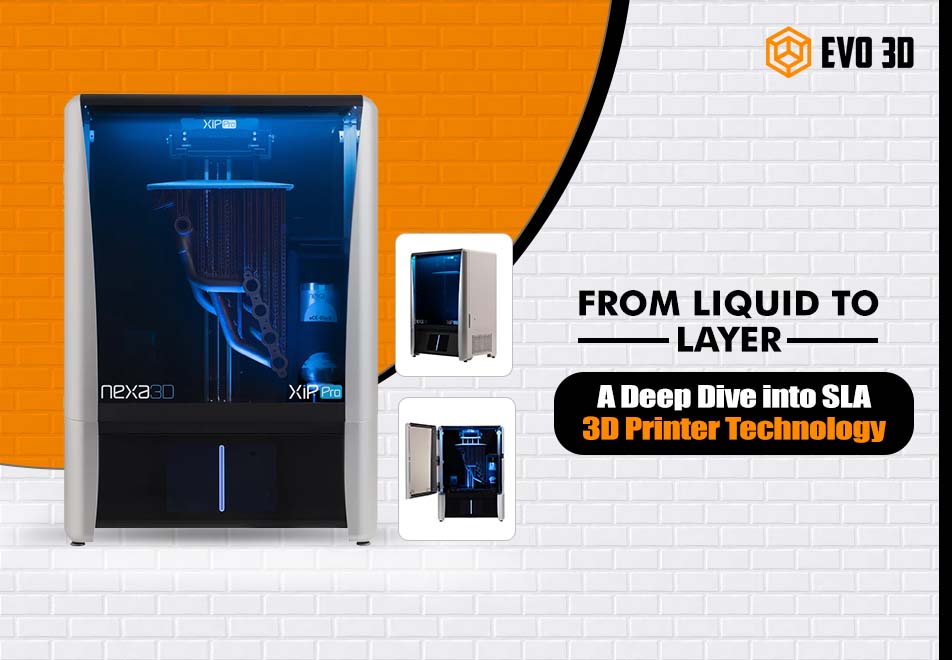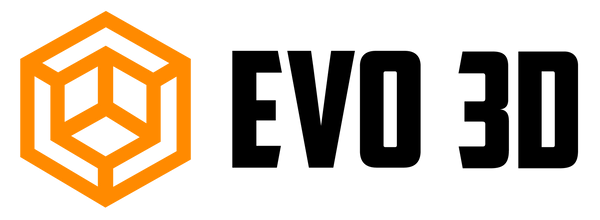From Liquid to Layer: A Deep Dive into SLA 3D Printer Technology

Over time, the printing industry has undergone significant change. The printing press was the only way to print anything back then, and it was new to everyone. But nowadays, every household has a printer that offers various customization options.
However, 3D printing technology has advanced to the point where it is now possible to print real objects from a printer. As a result, 3D printers now operate using various processes due to advancements.
But first, let's examine how the SLA 3D printer operates. Stereolithography, or SLA, is a popular resin 3D printing method that produces remarkably accurate results.
While the other three processes employ similar techniques, the light and source placement and the resin tank's location vary, impacting the cost of the 3D printer. Thus, the remaining three procedures are:
• SLA (Stereolithography): UV light is used in the SLA (Stereolithography) process to cure the liquid polymer resin.
• Digital Light Processing (DLP): The resin layer is cured using a digital projector, which serves as a light source.
• Liquid Crystal Display (LCD): To cure the polymer resins, a liquid display module serves as the light source by projecting particular light patterns.
But out of these three methods, SLA is the most popular because of its precision in using UV light to change the polymer layer by layer.
Later, as patents came to an end at the end of the 2000s, several new technologies, including desktop and small-format 3D printing, entered the market. But FDM (Fused Deposition Modeling) was the first to become widely used, particularly with desktop computers.
Although SLA is the oldest method available and is renowned for producing the smoothest surface objects with detailed parts and finishing, FDM has gained popularity in the industrial market. These are now used in every renowned industry like 3D printers for education, health care, etc., has become an important part.
Vat: The clear, liquid plastic known as resin is found in the vat and is known as the liquid polymer.
Build platform: In SLA printers, the build platform is lowered into the vat and is movable up and down following the printing process.
UV laser: The layers in the hardened plastic are restored by the UV laser.
Computer Interface: To control the printer's functions, including laser alignment and platform positioning based on the object to be printed, an interface is necessary.
Utilizing a computer and a CAD model, the 3D printers create objects in reverse orientation, with the laser directed toward the build platform.
Regarding 3D printers, they are finding their way into several well-known industries, such as manufacturing, healthcare, and education. Despite being somewhat pricey, 3D printers are ideal for businesses and industries because they represent a significant investment.
SLA 3D printers are becoming common; if you're interested in purchasing one, check out Evo 3D for a wide selection.
However, 3D printing technology has advanced to the point where it is now possible to print real objects from a printer. As a result, 3D printers now operate using various processes due to advancements.
But first, let's examine how the SLA 3D printer operates. Stereolithography, or SLA, is a popular resin 3D printing method that produces remarkably accurate results.
What is Stereolithography (SLA) 3D printing?
Stereolithography, or SLA for short, is a 3D resin printing process from the additive manufacturing families, also known as vat photopolymerization. The basis of the stereolithography 3D printer's operation is a light source, such as a laser, which solidifies liquid resin into plastic.While the other three processes employ similar techniques, the light and source placement and the resin tank's location vary, impacting the cost of the 3D printer. Thus, the remaining three procedures are:
• SLA (Stereolithography): UV light is used in the SLA (Stereolithography) process to cure the liquid polymer resin.
• Digital Light Processing (DLP): The resin layer is cured using a digital projector, which serves as a light source.
• Liquid Crystal Display (LCD): To cure the polymer resins, a liquid display module serves as the light source by projecting particular light patterns.
But out of these three methods, SLA is the most popular because of its precision in using UV light to change the polymer layer by layer.
A Brief History of Stereolithography
Japanese researcher Dr. Hideo Kodama developed a novel method for layered printing in the early 1970s by curing polymer resin with photosensitive light. Charles W. Hill, who received a patent for the SLA 3D printer's technology in 1986, is credited with giving it its name.Later, as patents came to an end at the end of the 2000s, several new technologies, including desktop and small-format 3D printing, entered the market. But FDM (Fused Deposition Modeling) was the first to become widely used, particularly with desktop computers.
Although SLA is the oldest method available and is renowned for producing the smoothest surface objects with detailed parts and finishing, FDM has gained popularity in the industrial market. These are now used in every renowned industry like 3D printers for education, health care, etc., has become an important part.
The Major Components of SLA 3D Printer
The four parts of a typical SLA 3D printer that facilitate object printing are as follows:Vat: The clear, liquid plastic known as resin is found in the vat and is known as the liquid polymer.
Build platform: In SLA printers, the build platform is lowered into the vat and is movable up and down following the printing process.
UV laser: The layers in the hardened plastic are restored by the UV laser.
Computer Interface: To control the printer's functions, including laser alignment and platform positioning based on the object to be printed, an interface is necessary.
Utilizing a computer and a CAD model, the 3D printers create objects in reverse orientation, with the laser directed toward the build platform.
The Working of SLA 3D Printer
Liquid resin is cured into three-dimensional objects using SLA 3D printing by subjecting a vat or tank of resin to a light source, which solidifies it. The light source in conventional top-down SLA 3D printers is placed above the liquid resin vat. The technique known as "inverted stereolithography," was first presented in 2011 by Max Lobovsky, David Cranor, and Natan Linder, the co-founders of Formlabs, placing the light source beneath the resin vat. The cross-section is drawn on the lowest layer of resin, which is then backfilled when the build platform raises, allowing the liquid resin to seep beneath the layer that has already dried.In Conclusion
Over time, the printing industry has undergone significant change. Printers used to be seen in particular offices or factories and were restricted to an industry. However, printers are now a household staple.Regarding 3D printers, they are finding their way into several well-known industries, such as manufacturing, healthcare, and education. Despite being somewhat pricey, 3D printers are ideal for businesses and industries because they represent a significant investment.
SLA 3D printers are becoming common; if you're interested in purchasing one, check out Evo 3D for a wide selection.
